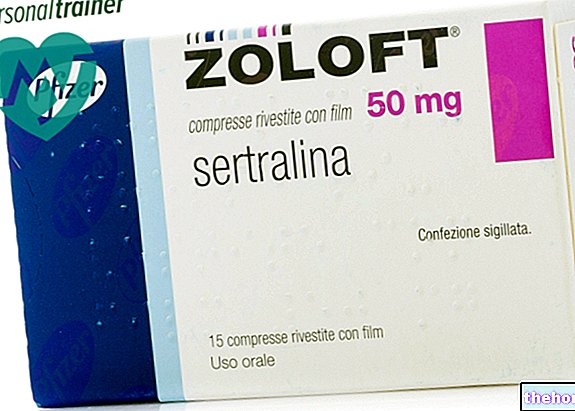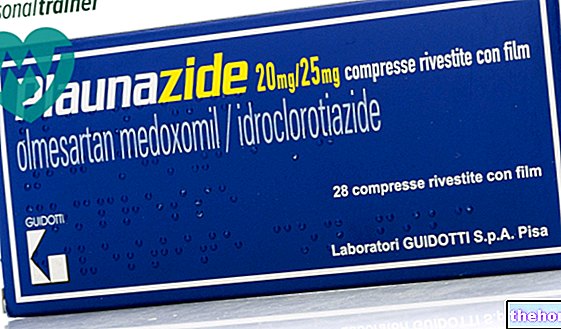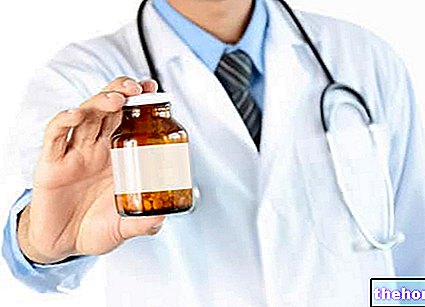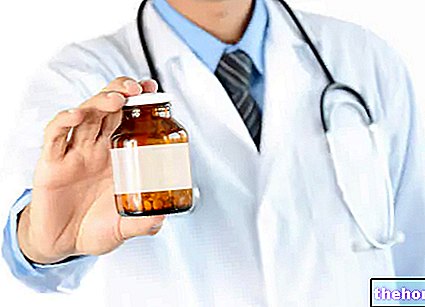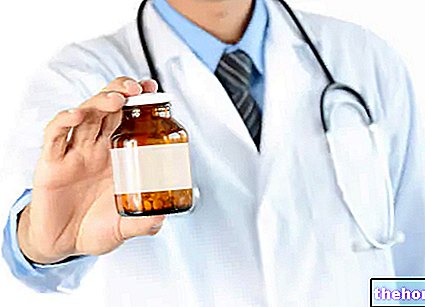Active ingredients: Phloroglucine, Trimethoxybenzene
Spasmex 80 mg + 80 mg tablets
Spasmex 150 mg + 150 mg suppositories
Spasmex package inserts are available for pack sizes: - Spasmex 80 mg + 80 mg tablets, Spasmex 150 mg + 150 mg suppositories
- Spasmex 40 mg / 4 ml solution for injection
Indications Why is Spasmex used? What is it for?
Spasmex contains the active ingredients phloroglucin and 1,3,5 trimethoxybenzene.
Spasmex is a medicine indicated in adults for the treatment of painful and sudden contractions of the urinary and biliary tract (where bile, a substance involved in some digestive processes, flows), which occur with cramps in the lower abdomen.
Talk to your doctor if you don't feel better or if you feel worse.
Contraindications When Spasmex should not be used
Do not take Spasmex
- if you are allergic to phloroglucin, 1,3,5 trimethoxybenzene or any of the other ingredients of this medicine (listed in section 6).
Precautions for use What you need to know before taking Spasmex
Talk to your doctor or pharmacist before taking Spasmex.
At this time, no special warnings or precautions have been reported for Spasmex.
Children and adolescents
Use in children and adolescents is not recommended as safety and efficacy have not been established.
Patients with renal / hepatic insufficiency
There are no data on the use of Spasmex
Interactions Which drugs or foods may change the effect of Spasmex
Tell your doctor or pharmacist if you are taking, have recently taken or might take any other medicines.
In particular, tell your doctor if you are taking a class of medicines called major pain relievers, medicines used in pain relief such as morphine and its derivatives. In fact, these medicines can cause the appearance of painful and sudden contractions.
Spasmex tablets contain lactose and sucrose
If you have been told by your doctor that you have an intolerance to some sugars, contact your doctor before taking this medicinal product.
Spasmex suppositories contain anhydrous sodium sulphite
Rarely it can cause severe hypersensitivity reactions and bronchospasm (narrowing of the bronchi which causes severe breathing difficulties due to a reduced passage of air).
Warnings It is important to know that:
Pregnancy and breastfeeding
If you are pregnant or breast-feeding, think you may be pregnant or are planning to have a baby, ask your doctor or pharmacist for advice before using this medicine.
Pregnancy
Take this medicine only if really needed and under direct medical supervision.
Feeding time
There are no known data on the use of Spasmex during lactation. Therefore avoid using Spasmex while breastfeeding.
Driving and using machines.
Spasmex does not affect the ability to drive and use machines.
Dose, Method and Time of Administration How to use Spasmex: Posology
Always take this medicine exactly as your doctor or pharmacist has told you. If in doubt, consult your doctor or pharmacist.
Tablets
The recommended dose is 6 tablets per day.
Suppositories
The recommended dose is 3 suppositories per day.
Patients with renal / hepatic insufficiency
There are no data on the use of Spasmex
Use in children and adolescents
Use in children and adolescents is not recommended as safety and efficacy have not been established.
Like
Tablets
The tablets must be taken by mouth.
Suppositories
Suppositories must be taken rectally.
Overdose What to do if you have taken too much Spasmex
If you take more Spasmex than you should
No cases of overdose use have been reported.
If you forget to take Spasmex
Do not take a double dose to make up for a forgotten dose.
If you stop taking Spasmex
If you have any further questions on the use of this medicine, ask your doctor or pharmacist.
Side Effects What are the side effects of Spasmex
Like all medicines, this medicine can cause side effects, although not everybody gets them.
Following administration of Spasmex the following undesirable effects have been reported based on frequency:
Rare (may affect up to 1 in 1,000 people)
- allergic skin reactions
Reporting of side effects
If you get any side effects, talk to your doctor. This includes any possible side effects not listed in this leaflet. You can also report side effects directly via the national reporting system at www.agenziafarmaco.gov.it/it/responsabili. By reporting side effects you can help provide more information on the safety of this medicine.
Expiry and Retention
Keep this medicine out of the sight and reach of children.
This medicine does not require any special storage conditions.
Do not use Spasmex tablets if you notice spots on the tablet or if the color is uneven.
Do not use this medicine after the expiry date which is stated on the package after EXP. The expiry date refers to the last day of that month.
Do not throw any medicines via wastewater or household waste. Ask your pharmacist how to dispose of medicines you no longer use. This will help protect the environment.
Composition and pharmaceutical form
What Spasmex contains
Tablets
- the active ingredients are: phloroglucin dihydrate 102,850 mg (equal to phloroglucin anhydrous 80 mg) and 1,3,5 trimethoxybenzene 80 mg
- the other ingredients are: lactose, sucrose (see section 2 "Spasmex tablets contain lactose and sucrose"), magnesium stearate, talc.
Suppositories
- the active ingredients are: phloroglucin dihydrate 193 mg (equal to phloroglucine anhydrous 150 mg) and 1,3,5 trimethoxybenzene 150 mg
- the other ingredients are: anhydrous sodium sulphite (see section 2 "Spasmex suppositories contains anhydrous sodium sulphite"), solid semisynthetic glycerides.
What Spasmex looks like and contents of the pack
Tablets
Spasmex in tablets is packaged in blister packs of 20 tablets.
Suppositories
Spasmex in suppositories is packaged in blister packs of 6 suppositories.
Source Package Leaflet: AIFA (Italian Medicines Agency). Content published in January 2016. The information present may not be up-to-date.
To have access to the most up-to-date version, it is advisable to access the AIFA (Italian Medicines Agency) website. Disclaimer and useful information.
01.0 NAME OF THE MEDICINAL PRODUCT
SPASMEX
02.0 QUALITATIVE AND QUANTITATIVE COMPOSITION
Each tablet contains:
Active principles
1,3,5 Trihydroxybenzene dihydrate (phloroglucin dihydrate) 102,850 mg (equal to anhydrous phloroglucin 80 mg); l, 3.5 Trimethoxybenzene 80 mg.
Each suppository contains:
Active principles
1,3,5 Trihydroxybenzene dihydrate (phloroglucin dihydrate) 193 mg (equal to anhydrous phloroglucin 150 mg); 1,3,5 Trimethoxybenzene 150 mg.
03.0 PHARMACEUTICAL FORM
Tablets, suppositories.
04.0 CLINICAL INFORMATION
04.1 Therapeutic indications
Spastic-painful manifestations of the urinary and biliary tract.
04.2 Posology and method of administration
In urology and hepatology: 6 tablets per day or 3 suppositories per day.
Patients with renal / hepatic insufficiency
There are no data on the use of Spasmex
Pediatric population
No studies have been conducted on the use of Spasmex tablets and Spasmex suppositories in this population
04.3 Contraindications
Hypersensitivity to the active substances or to any of the excipients.
04.4 Special warnings and appropriate precautions for use
Special warnings
Avoid associating Spasmex with major pain relievers such as morphine or its derivatives, because of their spamogenic effect.
Precautions for use
No reports in this regard have emerged so far.
Spasmex tablets contain lactose and are therefore not suitable for individuals with lactase deficiency, galactosemia or glucose / galactose malabsorption syndrome.
Spasmex tablets contain sucrose are therefore not suitable for patients with rare hereditary problems of fructose intolerance, glucose-galactose malabsorption or sucrase isomaltase insufficiency.
04.5 Interactions with other medicinal products and other forms of interaction
Avoid associating Spasmex with major pain relievers such as morphine or its derivatives, because of their spamogenic effect.
04.6 Pregnancy and lactation
Pregnancy
Studies carried out in animals have never shown teratogenic effects of phloroglucinol. In the absence of a teratogenic effect in animals, any malformations in humans are not expected. In fact, to date, the substances responsible for malformations in humans have been found to be teratogenic in animals during the studies conducted for this purpose.The relatively widespread clinical use of phloroglucinol has apparently not revealed any risk of malformation to date. It is advisable to use Phloroglucinol in case of pregnancy only in case of real need and under medical supervision.
Feeding time
In the absence of specific data it is advisable to avoid the use of Spasmex during breastfeeding
04.7 Effects on ability to drive and use machines
The substance does not interfere with the ability to drive and use machines.
04.8 Undesirable effects
Rare cases of allergic skin reactions.
04.9 Overdose
There are no known overdose syndromes.
05.0 PHARMACOLOGICAL PROPERTIES
05.1 Pharmacodynamic properties
Pharmacotherapeutic group: other drugs for functional intestinal disorders - various combinations.
ATC code: A03AX99.
Spasmex exerts its spasmolytic activity through an inhibition of tissue catechol-homethyl-transferase which intervenes in the catecholamine catabolism with consequent increase in sympathetic tone. It has been shown that phloroglucin and its methyl derivative, trimethoxybenzene, do not cause any modification of the physiological tone of smooth muscle, while they act electively on smooth muscle fibers in a state of spasm. An intense antispastic activity is exerted on the sphincter of Oddi as has been demonstrated in cholecystectomized dogs treated with BaCl2.
05.2 Pharmacokinetic properties
The administration of phloroglucin labeled with tritium (3H-T.H.B.) Allowed to highlight a plasma half-life of 15 minutes in the animal.
The drug concentration decreases rapidly up to the 4th hour. The drug electively concentrates in the kidney, liver and intestine.
No radioactivity is detectable 24 hours after administration.
05.3 Preclinical safety data
Experimental animal data reveal no special risks for humans based on conventional studies of safety, repeated dose toxicity, genotoxicity, carcinogenic potential, reproductive toxicity.
06.0 PHARMACEUTICAL INFORMATION
06.1 Excipients
Tablets: lactose; magnesium stearate; sucrose; talc.
Suppositories: solid semisynthetic glycerides, anhydrous sodium sulphite.
06.2 Incompatibility
Not encountered.
06.3 Period of validity
In intact packaging: 5 years.
06.4 Special precautions for storage
There are no special storage precautions.
06.5 Nature of the immediate packaging and contents of the package
Tablets in thermoformed blister. Box of 20 tablets.
Suppositories in opaque PVC shells. Box of 6 suppositories.
06.6 Instructions for use and handling
No special instructions.
07.0 MARKETING AUTHORIZATION HOLDER
SCHARPER S.p.A. - Via Manzoni, 45 - 20121 MILAN
08.0 MARKETING AUTHORIZATION NUMBER
Tablets: AIC n.020851046
Suppositories: AIC n. 020851022
09.0 DATE OF FIRST AUTHORIZATION OR RENEWAL OF THE AUTHORIZATION
Tablets: May 14, 1992 / May 2010
Suppositories: July 28, 1967 / May 2010
10.0 DATE OF REVISION OF THE TEXT
AIFA determination of 6 February 2007


